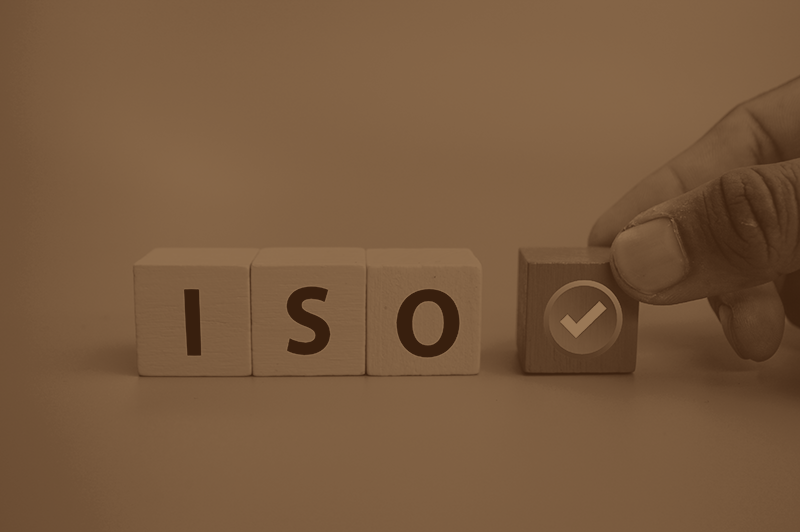ISO 14001 certification to establish an effective environmental management system
The International Standards Organization (ISO) has developed over 18,500 international standards, and of high significance is ISO’s environmental management system standards titled ISO 14001 (for ISO 14001 certification).
ISO 14001 gives a set of guiding principles to help organizations set up an effective and comprehensive environmental management system, one that uses a holistic approach to safeguard our environment and promote a healthy, functioning society.
As stakeholder pressure mounts to drive more sustainable business operations, a growing number of organizations are turning to trustworthy and globally recognized guiding standards and certifications. One of the most widely recognized certification providers for environmental stewardship is IS0 14001, which has over 300,000 certifications adopted across 171 countries around the world. As such, ISO 14001 saw a 5.5% increase in worldwide certificates in 2020, showing the growth and importance of UKAS-accredited certification in recent times.
ISO 14001 standards act as a tool to support the advancement and continual improvement of an entity’s environmental performance. IS0 14001 standards have opened difficult discussions around climate change, resource use, business waste, and water management. The standards celebrate a shift in business for the adoption of a sustainable business model.
In this Green Business Bureau article, we introduce ISO 14001 standards, explaining the latest developments of ISO 14001:2015. We present the business case for ISO 14001 certification, before explaining the limitation of this green business certification provider, and how your business can overcome these limitations. Click on the links below to navigate through this article:
- What is ISO 14001?
- The business case for ISO 14001 certification
- How to obtain ISO 14001 certification
- The limitations of ISO 14001 certification
What is ISO 14001?
ISO 14001 is a set of business standards that guide the setup of a comprehensive environmental management system. The standards are developed for any type of business, regardless of its activity or sector. ISO 14001 provides assurance that the environmental impacts of an entity are being measured and improved upon. This assurance is then communicated to key stakeholders, such as employees and investors, through an ISO audit and certification – which is conducted by a third party not related to ISO.
ISO 14001 standards were developed by 70 participating ISO members, each actively contributing time and expertise to provide insight for the development of the standards, which involved more than 120 people.
ISO is a worldwide federation of national standard bodies (ISO member bodies). ISO 14001 standards are just one set in a library of others. Other standards look toward different types of management systems, such as ISO 9001 for quality management, and ISO 45001 for occupational health and safety. This means ISO 14001 can be integrated easily into any existing ISO management system.
ISO 14001 covers the following topics related to an environmental management system:
- Organizational context,
- Leadership,
- Planning,
- Support,
- Operation,
- Perforamnce evaluation,
- Continuous improvement.
Other standards within the ISO 14000 family
ISO 14001 is a single set of standards within the ISO 14000 family. Other standards within this family serve to complement ISO 14001. These standards include:
- ISO 14004: Guidance is given on the establishment, implementation, maintenance, and improvement of an environmental management system, and their coordination with other management systems.
- ISO 14006: Standards are intended to be used by organizations that have already implemented an environmental management system as per ISO 14001. These standards help integrate eco-design into other management systems.
- ISO 14064-1: These standards specify the principles and requirements at the organizational level for the quantification and reporting of greenhouse gas (GHG) emissions, and the removal of these emissions.
Integrating ISO 14001 with ISO 9001
There are elements within the ISO 9001 framework that can be enhanced by the corresponding components of ISO 14001. Responsibilities for combining these standards might include:
- Drafting a policy statement and quantifiable objectives.
- Providing adequate resources.
- Managing documentation for both standards in a single document control system.
- Appointing a management representative as well as coordinators for quality and environmental management systems.
- Setting up organizational charts and a job description.
ISO 14001 can also be integrated with other standards including OHSAS 18001 and ISO 13485.
Who is ISO 14001 designed for?
ISO 14001 is suitable for organizations of all types and sizes – including private businesses, not-for-profit entities, and government entities. ISO 14001 requires the organization to consider all environmental issues relevant to operations, including: Waste management, water conservation, pollution, climate change mitigation, and resource use and efficiency.
ISO 14001:2004 or ISO 14001:2015?
ISO 14001 includes the need for continual improvement of an organization’s systems and approach to environmental concerns. And practicing what they preach, ISO 14001 standards have recently been revised to create a better system of standards. The latest is the ISO 14001:2015 revision mandate (dated 2012-01-23). The ISO 14001:2015 standards came into effect in September 2015. In September 2018, the predecessor, ISO 14001:2015 became invalid.
The main changes made during this update were:
- A more comprehensive integration of an entity’s environmental management system into the strategic planning of the business.
- A stronger focus on leadership, with new requirements for leadership engagement.
- Improved resource management to protect the environment.
- Adopting a life cycle perspective.
- Better communication with key stakeholders, with required interactions with external parties.
- Risk-based planning and controls.
- Digital documentation.
By improving the ISO 14001 standards as such, the governing body hopes these standards will be the choice for businesses, to help organizations manage their environmental impact.
The business case for ISO 14001 certification
ISO 14001 standards are designed to help businesses of all sizes, and across all sectors, make their day-to-day operations more sustainable. The benefits of such not only support the environment, but also an organization’s bottom line.
Showcasing the latter, ISO auditor and certification body BSI reports the two leading benefits of ISO 14001, which are:
- Improved stakeholder trust, with 60% of surveyed respondents stating ISO 14001 inspired trust in their business.
- Improved regulatory and industry compliance, with 76% of respondents stating ISO 14001 gave greater compliance.
In addition, ISO 14001:
- Guides how to consider multiple aspects of your business procurement, distribution, storage, and product development, to improve the environmental performance of your business.
- ISO 14001 drives you to evaluate how you manage your emergency response, customer expectations, stakeholders, and your relationship with your local community.
- Implemented measures will go beyond the expectations of key stakeholders and shareholders, enhancing business brand value and meeting customer demand. E.g. 84% of global consumers seek brands with a positive sustainability commitment. Plus, 61% of consumers report using social media to engage with companies around environmental and sustainability issues, with 50% of consumers seeking well-regarded seals and certifications to validate a company’s green credibility.
- A drive in profits, with 61% of corporations reporting an increase in near-term profits due to sustainable change, and 9 in 10 business leaders connecting long-term profitability with environmental sustainability.
How to obtain ISO 14001 certification
To become ISO 14001 certified, you’ll need access to, and to follow the standards set in the ISO 14001 certification guide (remember you can use ISO 14001 standards along with supplementary standards as mentioned in this article).
Before implementing ISO 14001 standards, follow the below tips designed to help you get started:
- Tip #1: Define your objectives. Think about, what you want to achieve with these standards.
- Tip #2: For any environmental management system to be successful, it needs support from business leaders that are also committed to the process.
- Tip #3: Obtain a good overview of existing processes and systems that are relevant to your environmental impact. This overview will form the basis of your environmental management system, and allow you to more easily identify gaps.
Once you’ve followed the standards detailed in ISO 14001, the next step is to obtain certification via an ISO audit. ISO audits are conducted by third-party providers, who aren’t related to ISO. An external auditor will access your business and operations to verify standards have been met.
You can also use an internal audit as a safety check, and to see if you meet the standards laid out in ISO 14001. Refer to our checklist resource designed to help small businesses internally audit operations as per ISO 14001: ISO 14001:2015 Audit Checklist.
The limitations of ISO 14001 certification
ISO 14001 is well respected and highly regarded across all industries and the globe. However, completing an ISO 14001 audit is a major undertaking that requires a significant investment of time and resources. Such a large investment segregates smaller businesses from obtaining ISO certification, presenting the following challenges:
- ISO projects can run for several months and require certified ISO consultants and auditors which is an expensive endeavor. Fines for non-compliance are also significant.
- ISO projects demand a lot of time and resources, taking employees away from their day-to-day jobs.
- ISO projects require the right expertise and knowledge which demands more time and money.
The above act as roadblocks preventing the widespread adoption of green business certification under ISO. Meaningful action is stalled with the complexities and expense of auditing restricting time and investment for real sustainable change. The Green Business Bureau was set up to address these challenges.
About the Green Business Bureau
The Green Business Bureau offers a robust program that helps companies of all sizes become more sustainable. GBB’s online EcoAssessment and EcoPlanner tools include over 500 initiatives designed to help organizations be socially and environmentally responsible.
The GBB certification process is entirely online and initiative based. GBB takes a scorecard approach to measure and assess sustainability. That is, for each completed sustainability initiative, a business is awarded points. The more initiatives completed over time, the higher the brand’s EcoScore. This EcoScore is then clearly communicated to stakeholders using a colored-based system of bronze, silver, gold, and platinum.
The GBB seal is well-recognized meaning member businesses are revered for their commitment to sustainability and the environment. GBB’s clickable web seal takes customers and employees to a webpage that showcases a business’s certification level, total points, sustainability mission, and accomplishments.
Click here to learn more about the Green Business Bureau.
Developing a sustainable business using ISO 14001 and GBB certification combined
ISO 14001 provides a thorough guide to help organizations develop a comprehensive environmental management system. Following the standards laid out in ISO 14001 will help businesses become more environmentally responsible, reducing an entity’s impact on our natural world.
However, the great deal of investment needed to gain ISO 14001 certification serves to hinder the effectiveness of this certification body. The Green Business Bureau offers an alternative approach that focuses on action over expensive auditing processes.
Plus, certification by GBB is supplementary to ISO 14001 standards. That is, by following GBB’s EcoAssessment and EcoPlanner, a business is well set to gain ISO 14001 certification as well. By delivering on the requirements laid out by both certification providers, a business will develop a comprehensive environmental management system and adopt initiatives for environmental and social responsibility – in addition to setting targets and tracking progress using GBB’s EcoPlanner and EcoAssessment.



